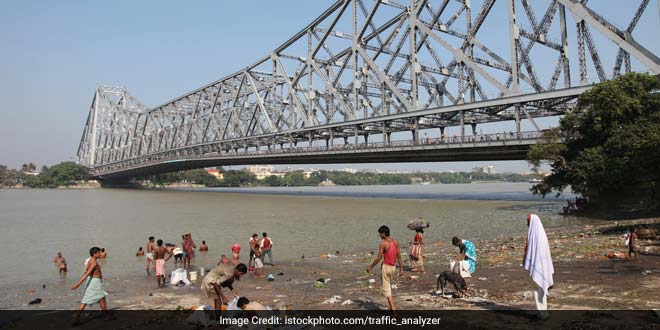Opinion: Opinion | How Bengal, Once An Economic Powerhouse, Lost Its Shine


West Bengal, once a dominant player in India’s economy, has seen a consistent decline in both its share of India’s GDP and its relative per capita income over the past six decades. In 1960-61, West Bengal contributed 10.5% to the national GDP, ranking third among Indian states, but this share has shrunk significantly to 5.6% in 2023-24, according to data from the Ministry of Statistics and Programme Implementation (MoSPI). The data has been collated in a working paper by the Economic Advisory Council to the Prime Minister by Sanjeev Sanyal & Aakanksha Arora. This decline is even more evident in terms of per capita income. Once boasting a per capita income 127.5% of the national average, West Bengal now sits at only 83.7%.
West Bengal’s economic decline, particularly in comparison to its counterparts Maharashtra and Tamil Nadu, reflects a marked divergence in growth trajectories since the 1960s. At the time of independence, West Bengal, along with Maharashtra and Tamil Nadu, was an industrial powerhouse, with Calcutta being one of the largest industrial clusters in the country. However, while Maharashtra maintained its economic standing and Tamil Nadu surged after the 1991 liberalisation, West Bengal’s decline began as early as the 1960s. The state’s share in India’s GDP fell from 10.5% in 1960-61 to a mere 5.6% by 2023-24, the sharpest drop among all states. This decline persisted even after economic liberalisation, which benefited other regions. As a result, West Bengal’s industrial and economic prominence has significantly eroded, leaving it lagging behind its former peers.

Share of Maharashtra, Tamil Nadu and West Bengal in India’s GDP (Source: EAC-PM Working Paper)
In contrast, Odisha, a state that historically lagged behind in most economic indicators, has undergone a significant transformation. From a relative per capita income of 54.3% in 1990-91, Odisha now stands at 88.5% in 2023-24, a remarkable turnaround that highlights the divergent paths of the two states.

Relative per capita income of West Bengal, Odisha and Assam. (Source: EAC-PM Working Paper)
The key difference between West Bengal and Odisha lies in their respective responses to national economic reforms, particularly those initiated in 1991. While West Bengal failed to capitalise on liberalisation, Odisha took full advantage of these changes to spur growth. Studies such as Ahluwalia’s (2000) and the OECD’s report on India’s regional development (2014) attribute West Bengal’s decline to policy inertia, a challenging business environment, and rigid labour laws. The state, known for its historically militant trade unions and restrictive labour regulations, deterred private investment, especially in manufacturing and industry. On the other hand, Odisha pursued a series of reforms to improve its business climate. As noted in a 2019 NITI Aayog report, Odisha made strides in ease of doing business by simplifying regulations, improving infrastructure, and actively courting foreign and domestic investors.
How Odisha Turned Its Fate
Odisha’s success can be traced to its focus on industrial development, infrastructure investment, and governance reforms, particularly after the early 2000s. The state implemented several proactive policies to attract investment in sectors such as mining, steel, and manufacturing. According to a World Bank report on Indian states (2017), Odisha’s government focused on creating investor-friendly policies, reducing red tape, and modernising its industrial policies, which in turn attracted major players like Tata Steel and Vedanta.
These reforms, combined with improvements in connectivity and infrastructure, helped Odisha’s economy grow at a faster pace than its peers, including West Bengal. Odisha’s share in India’s GDP, while still modest, has increased, and its per capita income has grown steadily. West Bengal, by contrast, has seen its industrial base erode, with key industries like jute and textiles failing to modernise, leading to stagnation in both output and employment.
West Bengal And Odisha: Two Different Trajectories
The divergence in economic trajectories between West Bengal and Odisha is also reflected in social and human development indicators. According to the multidimensional poverty index, Odisha has made significant improvements in literacy, life expectancy, and poverty reduction, driven by its economic growth and targeted welfare programmes. West Bengal, while performing relatively well in literacy and health metrics, has not been able to convert these into sustained economic gains. Odisha’s focus on inclusive growth, particularly its emphasis on poverty alleviation programmes, has resulted in significant reductions in poverty rates, from 57% in 2004-05 to 32% in 2011-12, as per Planning Commission data. In contrast, West Bengal’s poverty reduction has been more sluggish, with entrenched rural poverty remaining a challenge despite various government schemes.
The Union government may come up with the headcount ratio once the HCES data is fully released. However, in the absence of this data, the Multidimensional Poverty Index offers insights into poverty levels. A closer examination of the state-wise percentage point change in headcount ratio between 2015-16 and 2019-21 reveals a stark contrast: Odisha saw a significant decline of 13.68%, whereas West Bengal’s reduction was only 9.41%. This disparity highlights how West Bengal’s progress in reducing poverty has lagged behind, even when compared to Odisha.
Bengal’s Reliance On Agriculture
One of the critical factors in Odisha’s success has been its ability to transition from an agrarian economy to an industrial one, while West Bengal has remained overly dependent on agriculture. As per the Reserve Bank of India’s ‘Handbook of Statistics on Indian States’ (2022), the share of agriculture in Odisha’s Gross State Domestic Product (GSDP) declined from 37% in 1990-91 to around 16% in 2020-21, while the industrial sector’s share increased correspondingly. This shift towards a more diversified economy has been crucial in driving sustained economic growth in Odisha. West Bengal, on the other hand, continues to rely heavily on agriculture, which remains vulnerable to climatic changes and price fluctuations. Despite being an early leader in industry, West Bengal’s industrial growth has stagnated, with the state failing to attract significant new investment or develop new sectors beyond traditional industries like jute and textiles.
The role of governance and political stability cannot be ignored in explaining the contrasting economic trajectories. Odisha has experienced consistent political stability, allowing for long-term planning and execution of reforms. The state government has been credited with reducing corruption, improving governance, and implementing policies that foster industrial growth and infrastructure development. In contrast, West Bengal’s political landscape has been more turbulent, with frequent changes in leadership and governance styles.
Odisha’s Approach To PPP
Moreover, Odisha’s approach to public-private partnerships (PPP) in infrastructure development has been significantly more successful than West Bengal’s. As per the Economic Survey of India (2021-22), Odisha has successfully leveraged PPP models to build roads, ports, and industrial parks, which have further fuelled industrial growth. The Paradip Port in Odisha, for instance, has become a major hub for both domestic and international trade, providing a crucial advantage for industrial activities in the state. West Bengal, despite having the strategic Kolkata Port, has not been able to replicate such success due to inefficiencies, political bottlenecks, and a lack of coordinated investment in infrastructure. The state’s inability to modernise its port and transport infrastructure has further contributed to its declining economic relevance.
Without meaningful reforms, state governments risk failing their citizens by allowing stagnation and economic decline to persist. West Bengal’s steady fall from an industrial leader to a state with diminishing GDP share and per capita income exemplifies the consequences of policy inertia and poor governance. In contrast, Odisha’s proactive reforms, improved business climate, and strategic focus on infrastructure and industrial growth have driven its remarkable economic transformation. If states like West Bengal do not prioritise structural reforms, enhance governance, and diversify their economies, they will continue to lag behind, failing to meet the aspirations of their people.
(Bibek Debroy is Chairman, Economic Advisory Council to the Prime Minister, and Aditya Sinha is OSD, Research, Economic Advisory Council to the Prime Minister)
Disclaimer: These are the personal opinions of the author








